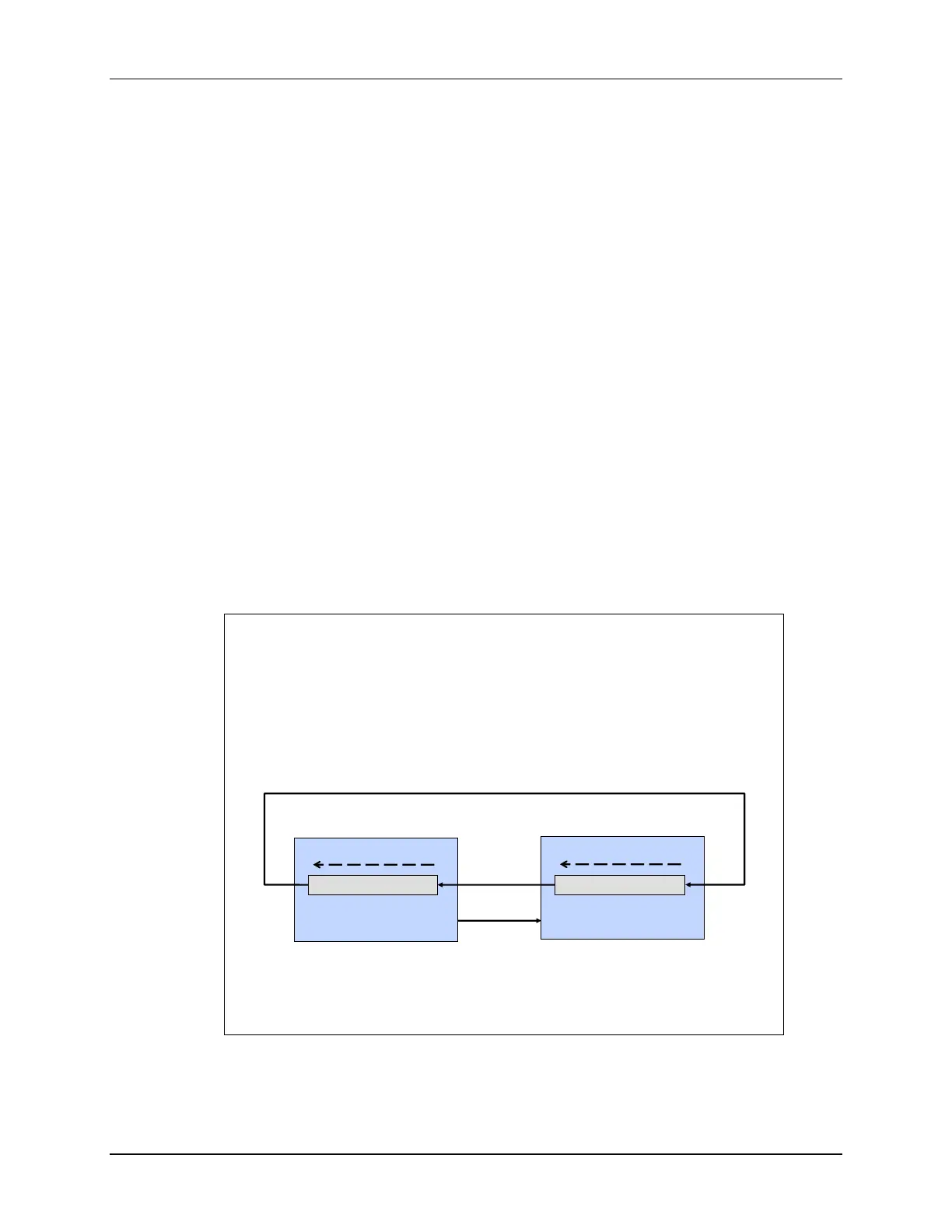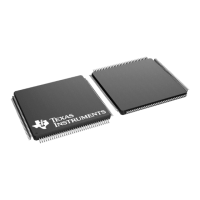Serial Peripheral Interface (SPI)
12 - 4 TMS320F2837xD Microcontroller Workshop - Communications
Serial Peripheral Interface (SPI)
The SPI is a high-speed synchronous serial port that shifts a programmable length serial bit
stream into and out of the device at a programmable bit-transfer rate. It is typically used for
communications between processors and external peripherals, and it has a 16-level deep receive
and transmit FIFO for reducing servicing overhead. During data transfers, one SPI device must
be configured as the transfer MASTER, and all other devices configured as SLAVES. The
master drives the transfer clock signal for all SLAVES on the bus. SPI communications can be
implemented in any of three different modes:
• MASTER sends data, SLAVES send dummy data
• MASTER sends data, one SLAVE sends data
• MASTER sends dummy data, one SLAVE sends data
In its simplest form, the SPI can be thought of as a programmable shift register. Data is shifted in
and out of the SPI through the SPIDAT register. Data to be transmitted is written directly to the
SPIDAT register, and received data is latched into the SPIBUF register for reading by the CPU.
This allows for double-buffered receive operation, in that the CPU need not read the current
received data from SPIBUF before a new receive operation can be started. However, the CPU
must read SPIBUF before the new operation is complete of a receiver overrun error will occur. In
addition, double-buffered transmit is not supported: the current transmission must be complete
before the next data character is written to SPIDAT or the current transmission will be corrupted.
The Master can initiate a data transfer at any time because it controls the SPICLK signal. The
software, however, determines how the Master detects when the Slave is ready to broadcast.
SPI Data Flow
Simultaneous transmits and receive
SPI Master provides the clock signal
SPI Shift Register
SPI Device #1 - Master SPI Device #2 - Slave
shift
shift
clock
SPI Shift Register

